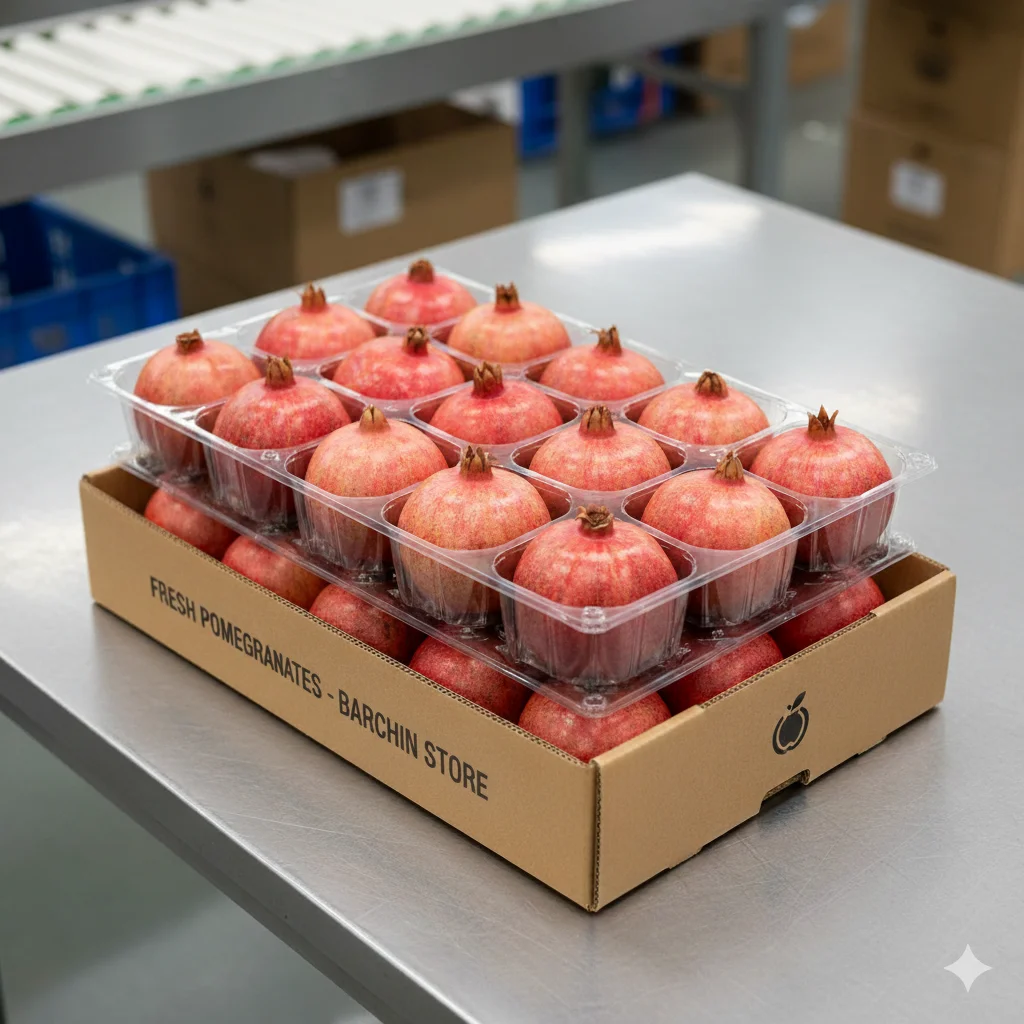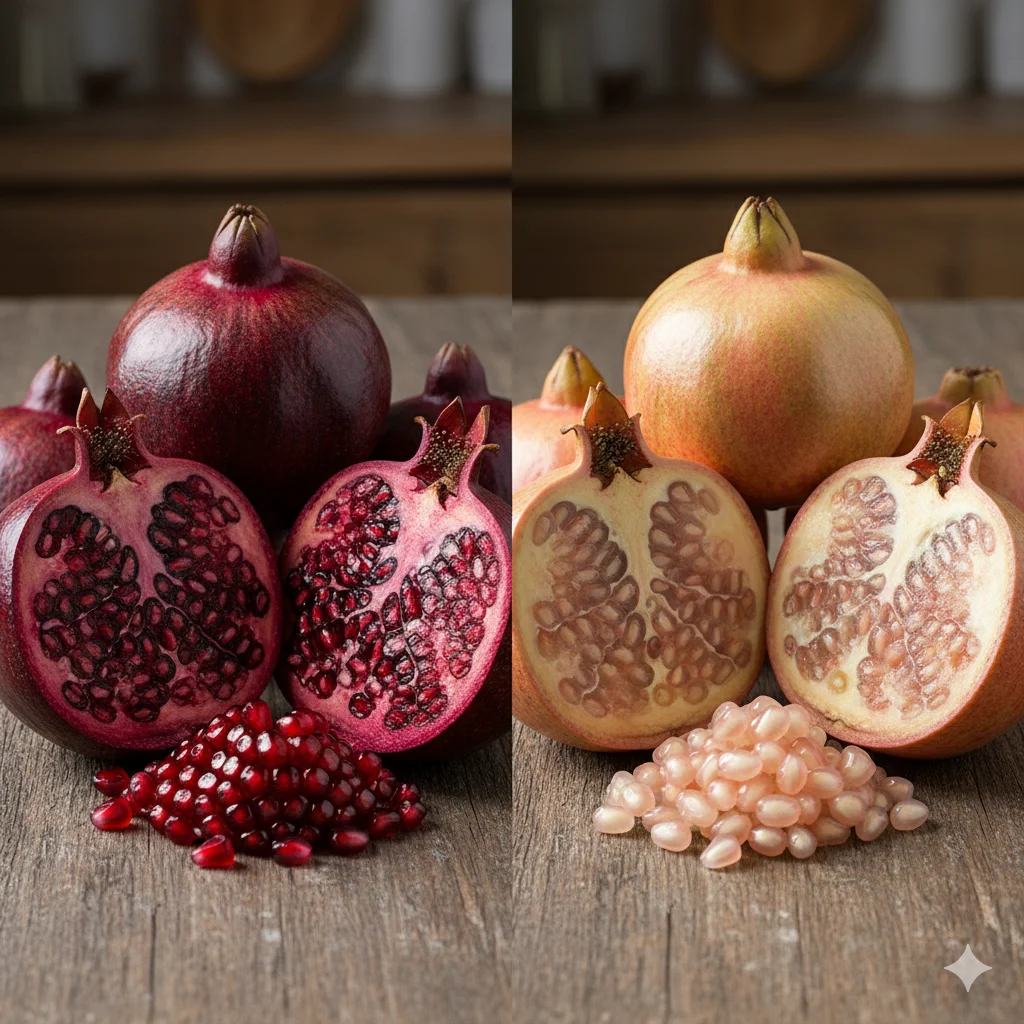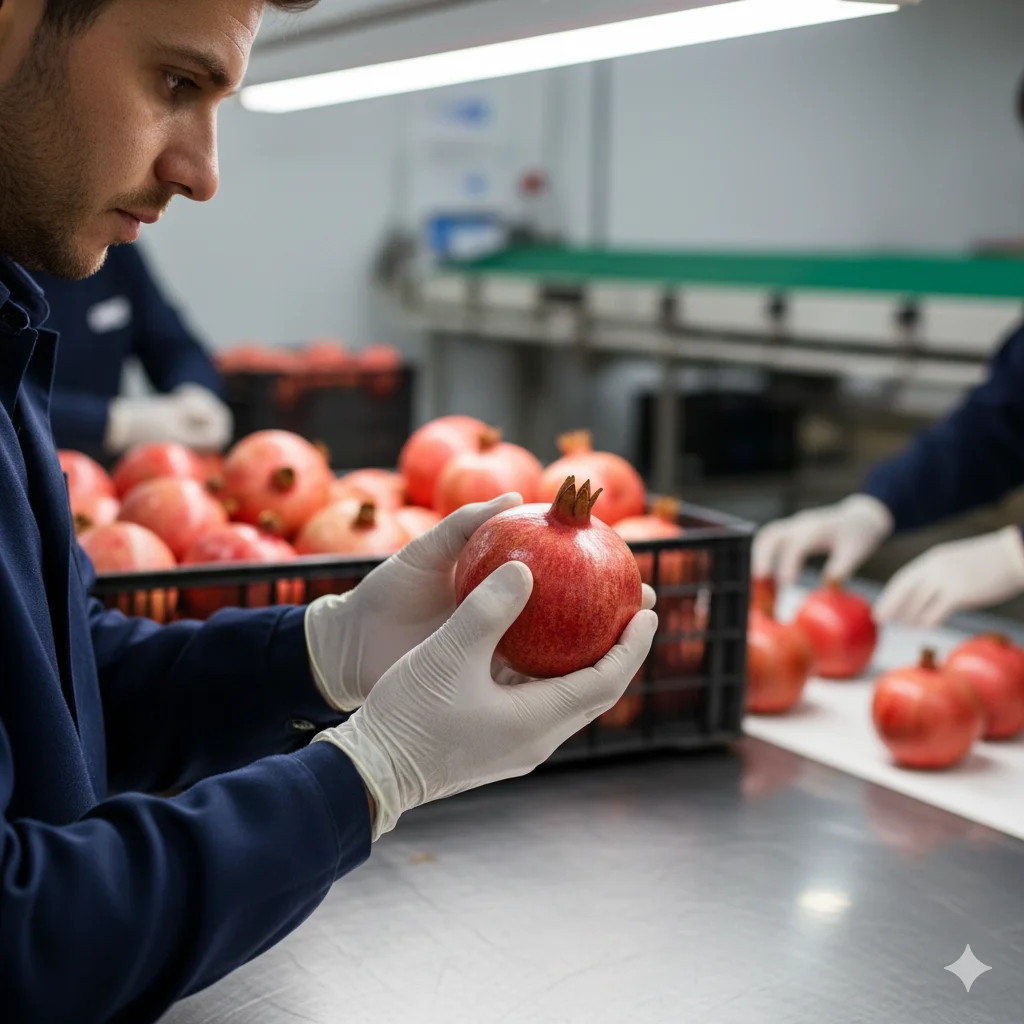Premium Pomegranate Guide Export | Quality & Standards
The pomegranate, often referred to as the “jewel of winter,” is more than just a fruit; it’s a symbol of health, history, and abundance. With its deep ruby-red arils bursting with a unique sweet-tart flavor, the pomegranate has captivated cultures for millennia. Today, it is celebrated globally as a superfood, packed with powerful antioxidants and essential vitamins. For businesses in the fresh produce industry, sourcing pomegranates is one thing, but sourcing a truly premium export pomegranate is what sets a brand apart. This is a fruit where quality is not just a feature—it is the entire product.
What elevates a standard pomegranate to an export-grade jewel? The journey from the orchard to the international market is a meticulous process governed by strict quality controls, precise grading, and advanced logistics. It involves selecting the right variety, understanding the subtle visual cues of a perfect fruit, and ensuring its integrity is preserved across thousands of miles.
This definitive guide is designed for discerning B2B buyers, importers, wholesalers, and distributors in the global fruit market. We will delve into the critical aspects of pomegranate quality, explore the international standards that define a premium product, and explain how expert handling and packaging ensure that only the best fruit reaches your market. Whether you are a seasoned importer or new to sourcing this magnificent fruit, this guide will equip you with the knowledge to make informed decisions and procure a premium export pomegranate that delights your customers.
Understanding Pomegranate Varieties: A World of Flavor and Color
The first step in sourcing a premium pomegranate export is understanding that the term “pomegranate” encompasses a wide range of varieties, each with its own unique profile of flavor, color, seed hardness, and size. While there are hundreds of cultivars grown worldwide, only a select few possess the ideal characteristics for the demanding international export market. A reliable supplier will have deep knowledge of these varieties and can guide you to the one that best suits your target consumers’ preferences. Pomegranates
What Defines a “Premium” Variety for Export?
Export markets demand consistency and quality. The most sought-after pomegranate varieties for export, such as the ‘Wonderful’ or similar premium cultivars, are chosen for a specific set of traits. These include a large fruit size, a brilliant and uniform external color, and most importantly, arils that are deep ruby-red. Furthermore, the balance between sweetness and tartness is critical, often measured scientifically to ensure a consistent and enjoyable eating experience. Soft-seeded varieties are also gaining immense popularity in markets where consumers prefer to eat the entire aril without a hard, woody seed.
Sweet vs. Tart: Matching the Flavor Profile to Your Market
The ideal flavor profile of a pomegranate can vary significantly by region. Some markets have a strong preference for intensely sweet varieties with low acidity, perfect for desserts and fresh consumption. Other markets appreciate a more complex, sweet-tart flavor that adds a zesty kick to salads, savory dishes, and beverages. As a leading supplier, we understand these nuances. We work closely with our clients to identify the flavor profile that will achieve the highest success in their specific market, ensuring customer satisfaction and repeat business. Understanding your customers’ palates is key to selecting the right premium pomegranate export variety.
The Hallmarks of Quality: A Visual and Physical Inspection Guide
Beyond the variety, the quality of an individual pomegranate is assessed through a rigorous inspection process. Experienced quality controllers can determine the health and flavor of a fruit long before it is cut open. For importers, knowing these hallmarks of quality is crucial for verifying the excellence of a shipment.
The Exterior: What to Look For in the Rind
The rind, or skin, of a pomegranate is the first line of defense and a primary indicator of its internal quality.
- Color and Sheen: A premium fruit should have a consistent, deep color appropriate for its variety—typically a vibrant red or reddish-pink. It should have a healthy sheen, not a dull, matte finish.
- Shape and Weight: The fruit should be plump, round, and feel heavy for its size. This weightiness is a strong indicator of high juice content. A symmetrical, well-formed shape suggests healthy development.
- Skin Condition: The skin must be firm to the touch, smooth, and completely free of deep cuts, soft spots, bruises, or any signs of mold. Minor surface scratches or “scarring” can be natural, but deep imperfections can indicate damage to the arils within. The “crown” at the top of the fruit should be dry and intact.
The Interior: Assessing Arils, Seeds, and Juice Content
While a visual external inspection is key, the true value lies inside. In quality control processes, sample fruits are cut open to verify internal standards.
- Aril Color and Plumpness: The arils are the star of the show. They must be plump, turgid, and have a translucent, deep ruby-red color. Pale, shrunken, or brownish arils are signs of a subpar fruit.
- Seed Hardness: As mentioned, seed texture is a critical factor. Premium varieties are often selected for their soft, barely noticeable seeds, which enhances the eating experience.
- Juice Content and Brix Level: The ultimate measure of sweetness is the Brix level, which is a scientific measurement of sugar content in the juice. A high Brix level, combined with a balanced pH for a hint of tartness, is the goal for a premium pomegranate export
- . Random samples are often tested with a refractometer to ensure the entire batch meets the required Brix standard.
International Grading and Sizing Standards
To facilitate global trade, the fresh produce industry relies on standardized grading and sizing. These standards ensure that buyers receive a uniform and predictable product, no matter where they are in the world. When you place an order for a premium export pomegranate, you are ordering a product that has been meticulously sorted according to these international benchmarks.
Understanding Caliber and Count
Pomegranates are typically sized in two ways: by caliber (the diameter of the fruit in millimeters) or by count (the number of fruits that fit into a standard-sized carton). For example, a supplier’s inventory might list sizes like “Count 9” or “Count 10,” indicating that 9 or 10 pomegranates of a similar size are packed in one box. This standardization is essential for retail pricing, packaging, and inventory management. A reliable exporter will provide a detailed breakdown of the available sizes and counts for each shipment.
Grade A (Extra Class) vs. Grade B (Class I): What’s the Difference?
While official terms may vary slightly, produce is generally categorized into grades.
- Grade A / Extra Class: This is the highest quality. These fruits are virtually flawless. They must be uniform in size and color, with perfectly intact skin and shape. This is the grade typically reserved for high-end retailers where appearance is paramount.
- Grade B / Class I: This grade still represents excellent quality but allows for very minor defects in shape, color, or skin, as long as they do not affect the internal quality or shelf life of the fruit. This is a common and popular grade for general retail.
Any fruit with significant defects that affect its freshness or edibility would not qualify for export. Our commitment is to provide clear information on the grade of each shipment, so you know exactly what to expect. Contact Us for Specifications and a Quote
The Crucial Role of Packaging and Cold Chain in Preservation
Sourcing a perfect pomegranate is only half the battle; ensuring it arrives in that same perfect condition is a science. The journey of a premium export pomegranate relies on two pillars: advanced packaging and an unbroken cold chain.
Advanced Packaging Solutions
Standard cardboard boxes are not enough for a high-value fruit like the pomegranate. Premium export packaging is designed to protect, ventilate, and preserve. This includes:
- Sturdy, Ventilated Cartons: To allow for air circulation and prevent heat buildup.
- Single-Layer Trays: To prevent the fruits from crushing each other under their own weight.
- Molded Dividers or Cushions: To cradle each pomegranate individually, protecting it from impact and bruising during transit.
- Proper Labeling: Including size, grade, count, origin, and handling instructions.
Maintaining the Unbroken Cold Chain
The cold chain refers to the consistent, temperature-controlled environment the fruit is kept in from the moment it is packed until it reaches its final destination. For pomegranates, the ideal storage temperature is typically around 5-7°C (41-45°F) with high humidity. Any significant deviation from this—whether on a loading dock, in a shipping container, or in a warehouse—can drastically reduce the fruit’s shelf life, damage its texture, and compromise its flavor. We utilize modern logistics with temperature-monitoring technology to guarantee the integrity of the cold chain, ensuring our premium pomegranate export shipment arrives with maximum freshness.
Conclusion:
Sourcing a premium pomegranate export is a detailed process that goes far beyond simply buying a fruit. It requires an understanding of varieties, a keen eye for quality inspection, and a deep appreciation for the science of logistics and preservation. By focusing on the key indicators—from the weight and color of the fruit to its Brix level and packaging—importers can ensure they are procuring a product that truly stands out in the competitive global market.
At our core, we are committed to these principles of excellence. We bridge the gap between pristine orchards and international markets, handling every step with the care and expertise this exceptional fruit deserves. We invite you to Contact us to discuss your specific needs and discover how our premium pomegranates can add value to your business.
(Tags)
Premium Pomegranate, Pomegranate Export, Fruit Sourcing Guide, Pomegranate Quality, International Fruit Standards, B2B Fruit Supply, Pomegranate Grades, Fresh Produce Export, Pomegranate Varieties, Cold Chain Logistics




